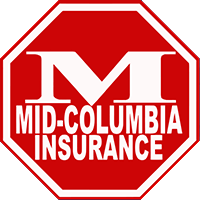Best SR-22 Insurance
Darrington Washington
Reinstate Your Driver’s License!

Do I need SR22 and regular insurance?
I don’t own a car, do I still need to file an SR22?
If you don’t own a car and need an SR22, no problem. Washington drivers are eligible for a Broad Form insurance policy that provides coverage for any car you drive for personal use — owned or non-owned. We are the Broad Form SR22 Insurance experts.
What’s the difference between SR22 and regular insurance?
What is Non-Owner SR22 insurance?
In Washington state we have a broad form policy that is a better option for those needing a stand-alone SR22 policy than a non-owned policy because non-owned policies don’t cover many borrowed vehicles but a broad form policy will. So, if you don’t want to lose your primary insurance provider due to your SR22 requirement, buying a separate broad form SR22 policy to handle the SR22 requirement may be a smart move.
What if I need an SR22 in one state but live in another state?
Can I get SR22 insurance without a car?
A broad form policy is a smart choice for someone who does not own a car but needs an SR22 and wants to be able to drive. Once you get a car you can either get a policy on that car or keep your broad form policy since it covers owned and non-owned vehicles.
Where do you get SR22 insurance?
Some preferred insurance carriers, if you inform them you need an SR22, might at renewal raise your rates significantly or cancel your policy. If you don’t want to jeopardize your existing coverage, talk to us about a Broad Form SR22 policy. It can be very inexpensive and should allow you to keep your preferred rates.
What happens if I am late paying my SR22 insurance?
Late payment frustrations can be huge. Multiple calls to the DOL and your insurance company, proving to the DOL you have coverage, and trying to get avoidable DOL fees removed just because you got behind on your car insurance premiums.
How much does SR22 insurance cost a month?
This is why it is important to work with an independent agency like Mid-Columbia Insurance that partners with multiple companies to be sure you are getting more than one option to choose from.
What is an SR22 insurance policy?
Although referred to as “SR-22 insurance,” An SR-22 is not actually insurance but instead is simply an endorsement to regular insurance policy. This endorsement is filed with the state as proof that you have insurance. The SR22 notifies the state that you have insurance in force and promises to notify them if your policy cancels.
Why is an SR22 insurance filing required?
- Driving under the influence (DUI) (aka driving while intoxicated (DWI)) or other alcohol related violations
- Serious traffic offense convictions, such as reckless or negligent driving
- Several traffic offenses in a short time period
- Driving with a suspended license
- At-Fault accident while driving without insurance, and even
- Driving without insurance in Oregon (even though you live in Washington)
The SR-22 requirement just means that proof of insurance has to be sent to the state and is one step towards getting your license reinstated and getting you back on the road.
How long is an SR22 insurance form required?
Be sure not to cancel your SR22 before the requirement is lifted since your insurer is required to inform the DOL that you no longer have an SR22 and your license could be suspended or revoked again. A simple call to the DOL is usually all that is required to find out how long you will need to carry the SR22.
What happens if my SR22 insurance cancels?
When your SR22 policy cancels or lapses, your insurance company is legally required to send an SR-26 form to the state to let them know that your policy is no longer active. If not handled promptly, the state will re-suspend your driver’s license and you will need to jump through all the hoops and pay all the fees required to reinstate your license once again.
Top Things to See Around Darrington
Just the Facts about Darrington
Darrington is a town in Snohomish County, Washington, United States. It is located in a North Cascades mountain valley formed by the Sauk and North Fork Stillaguamish rivers. Darrington is united to simple areas by State Route 530, which runs along the two rivers towards the city of Arlington, located 30 miles (48 km) to the west, and Rockport. It had a population of 1,347 at the 2010 census.
Non-indigenous harmony in the Place began in 1891 at the site of a Skagit campsite between the two rivers, near the traditional home of the Sauk-Suiattle tribe. Prospectors had arrived in the area during the 1880s while looking for gold and further minerals, but were quickly displaced by the logging industry that would grant dominate Darrington for much of the 20th century. The Northern Pacific Railway built a branch pedigree to the town in 1901 and ushered in several years of growth.
During the Great Depression, Darrington hosted a Civilian Conservation Corps camp that bigger roads, trails, and firefighting infrastructure in the reachable Mount Baker National Forest. Several waves of Appalachian emigrants arrived in the Place from North Carolina, forming a culture that is seen in the town’s annual bluegrass festival and rodeo.
Darrington was incorporated as a town in 1945, under a mayor–council government. Its economy has transitioned away from logging and towards tourism, particularly outdoor undertakings such as hiking, mountain climbing, and fishing, due to its proximity to the Mount Baker–Snoqualmie National Forest. The Darrington Place is 554 feet (169 m) above sea level and receives significantly more precipitation and snowfall than the Puget Sound lowlands.
The upper Stillaguamish and Sauk valleys on the Sauk, Suiattle, and White Chuck rivers were historically inhabited by various Native American Coast Salish groups, including the Stillaguamish, the Sauk-Suiattle, and the Upper Skagit. The Sauk-Suiattle maintained a village site and burial ground near modern-day Darrington, while the Skagits used the plain between the Stillaguamish and Sauk rivers as a portage for overland transport of canoes. The portage, named Kudsl Kudsl or Kuds-al-kaid, was after that used as a transiting narrowing for travelers from Eastern Washington on their pretension to and from the Puget Sound coast.
Source: Darrington, Washington in Wikipedia


